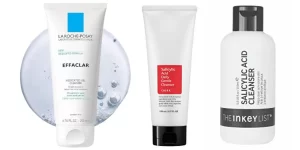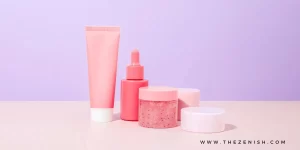
Let’s be real – we’ve all struggled with the annoyingly persistent issues of large pores and blackheads at some point.
They can be frustrating to deal with, and if left unchecked, they can take a toll on your confidence.
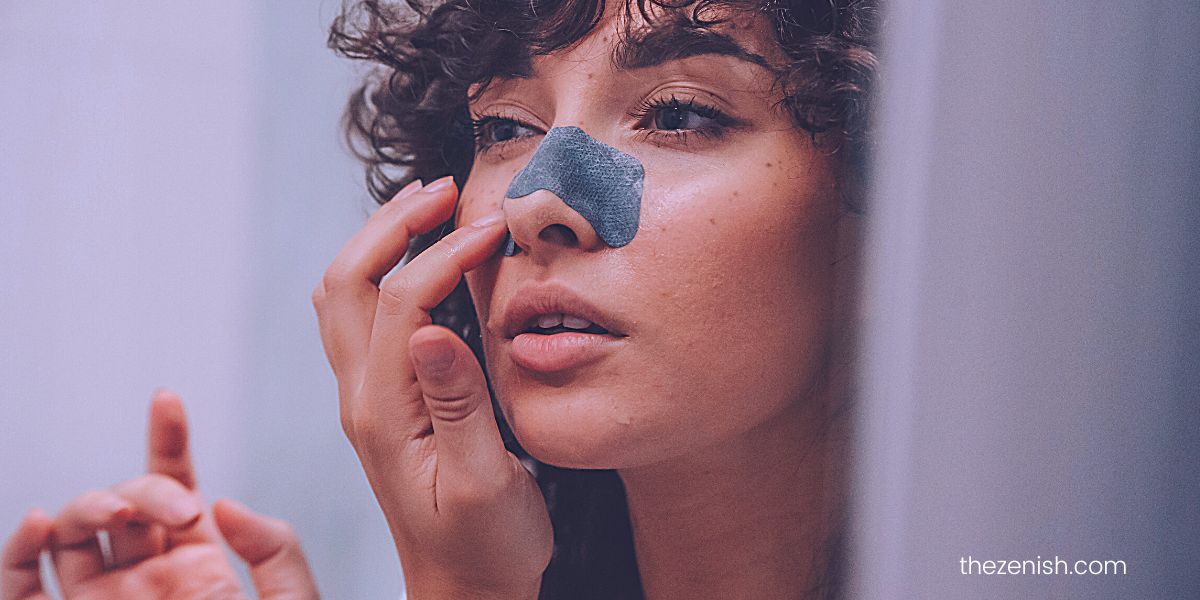
But, don’t worry, because a solid skincare routine can work wonders in addressing these issues!
See also: Skincare beginners guide: How to build a skincare routine for all skin types
Let’s dive into creating a skincare routine tailored to addressing large pores and blackheads.
Grab your favorite mug of tea and get comfortable; let’s get started!
A step-by-step skincare routine for large pores and blackheads
📌 Pin this for later!
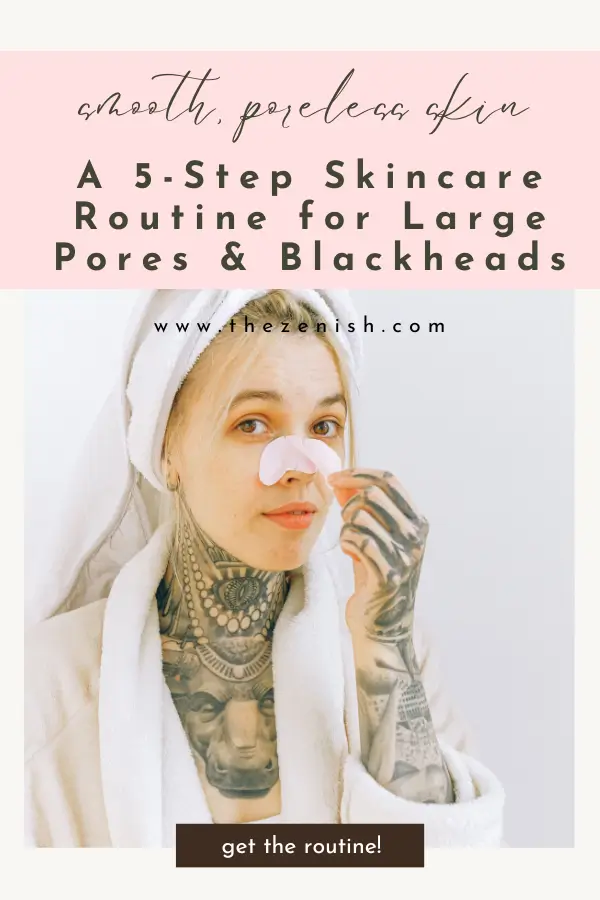
We all have pores, but when they’re too big, it can feel like they’re staring back at you in the mirror.
And don’t even get me started on blackheads – those little dots that seem impossible to get rid of!
See also: 5 Best Products To Unclog Clogged Pores
But here’s the thing: these issues aren’t just cosmetic concerns.
Large pores can also lead to more oil production, which can cause breakouts, while blackheads can signal a buildup of dirt and oil.
That’s why a good skincare routine is crucial in tackling these issues. Trust me, your skin will thank you!
| this post may contain affiliate links, which means if you purchase from one of these links, I may receive a small commission at no additional cost to you. |
Step #1: Cleanse
Alrighty, step one in your mission to conquer large pores and blackheads: cleansing!
This is where you bid adieu to excess oil and dirt that clog up your pores and make your skin look dull.
Think of it like a fresh start for your face! But hold up, before you start scrubbing away, make sure you’re using the right cleanser for your skin type.
If you have oily skin, gel cleansers work wonders in removing excess oil, while cream cleansers are perfect for dry skin.
And remember, don’t overdo it with the scrubbing!
A gentle touch is all it takes to get the job done.
See also: 10 Best Cleansers for Damaged Skin Barriers
3 cleansers for large pores and blackheads
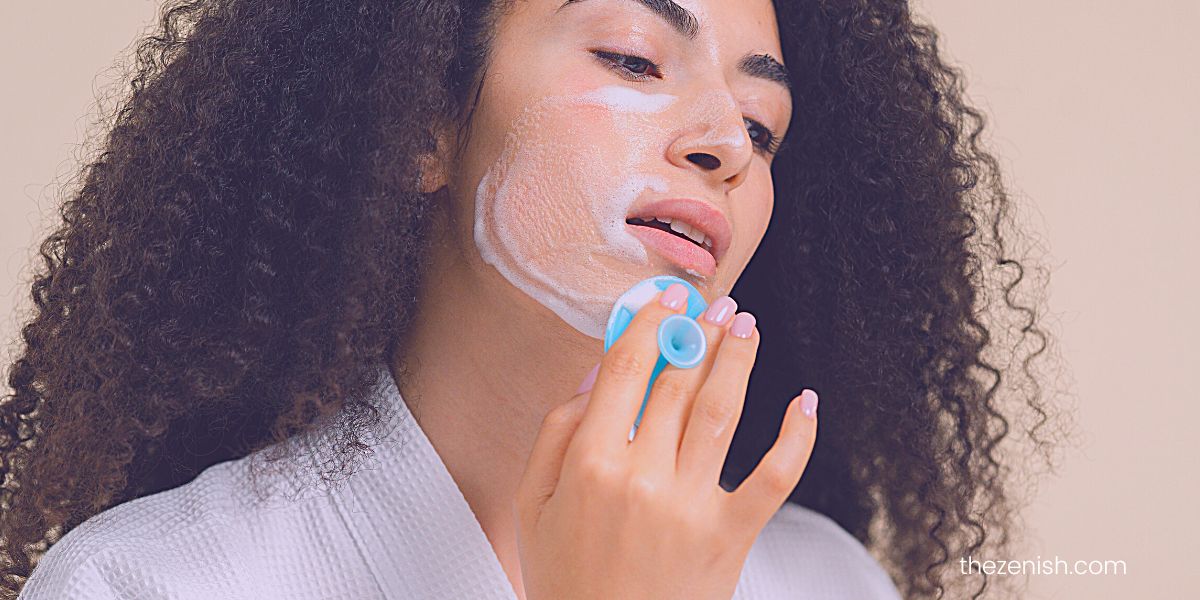
These 3 cleansers will leave your skin feeling clean and fresh:
- Neutrogena Oil-Free Acne Wash: This is a classic for a reason – it’s tough on dirt and oil, but gentle enough for daily use. The salicylic acid in the formula helps to unclog pores and prevent future breakouts, making it perfect for those of us with acne-prone skin.
- La Roche-Posay Effaclar Gel Cleanser: If you’re dealing with oily skin and stubborn blackheads, this gel cleanser is your new best friend. The formula is specially designed to target excess oil production and unclog pores, leaving your skin feeling refreshed and clean.
- Cetaphil Daily Facial Cleanser: This gentle cleanser is perfect if you have sensitive skin and still want an effective cleanse. The non-comedogenic formula won’t clog pores or leave your skin feeling stripped of moisture, and it’s gentle enough to use both morning and night.
3 Tips for Effective Cleansing
- First and foremost, always make sure to wash your hands before touching your face.
- Use lukewarm water to open up your pores, and work the cleanser into a lather before gently massaging it onto your skin.
- Finally, make sure to rinse thoroughly – leftover cleanser can clog up your pores and defeat the whole purpose of cleansing in the first place!
Step #2: Exfoliate
Alright, now that we’ve got cleansing down pat, let’s move on to step two: exfoliating!
Exfoliation is super important for improving the appearance of large pores and blackheads.
Here’s why: when dead skin cells build up on the surface of your skin, they can clog up your pores and make them appear even larger.
Not cute.
But exfoliating helps to slough away those dead skin cells, leaving your skin looking smooth and bright.
Plus, it helps to loosen up blackheads and make them easier to remove.
Types of exfoliants (chemical vs physical) and their benefits
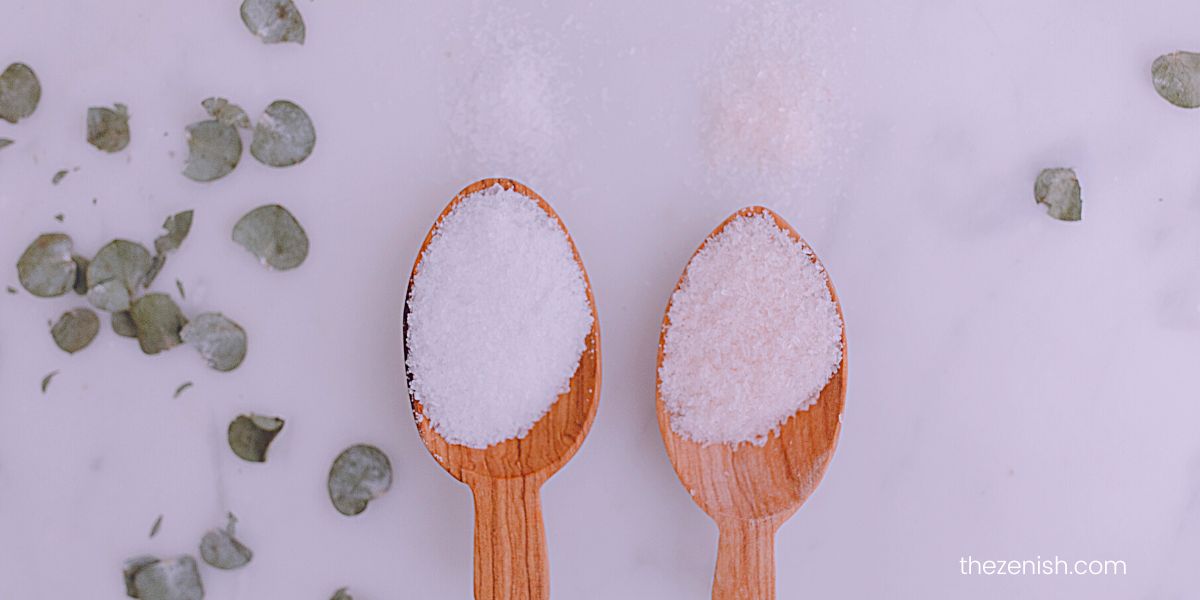
Now, when it comes to exfoliation, there are two types to choose from: chemical and physical.
So, what’s the difference?
Physical exfoliants use granules or beads to physically buff away dead skin cells, while chemical exfoliants use acids or enzymes to dissolve them.
Both types have their benefits, so let’s break it down:
Physical exfoliants
Physical exfoliants, made with natural ingredients such as sugar, nutshells, beads, or salt, come in a variety of textures, ranging from fine to coarse.
These exfoliants are also great for oily skin, as they can help to remove excess oil and prevent breakouts.
Chemical exfoliants
On the other hand, chemical exfoliants are great for sensitive skin or if you want a gentler approach to exfoliation.
They work by using acids or enzymes to break down the bonds between dead skin cells, revealing brighter, smoother skin underneath.
They can also help to minimize the appearance of pores and help improve your skin texture.
So, which type of exfoliant should you choose?
At the end of the day, it boils down to what works best for you and your skin type.
Just make sure to follow the instructions carefully and not overdo it – too much exfoliation can do more harm than good!
See also: 8 Exfoliating Mistakes You Should Avoid For Healthier-Looking Skin
2 exfoliants for large pores and blackheads
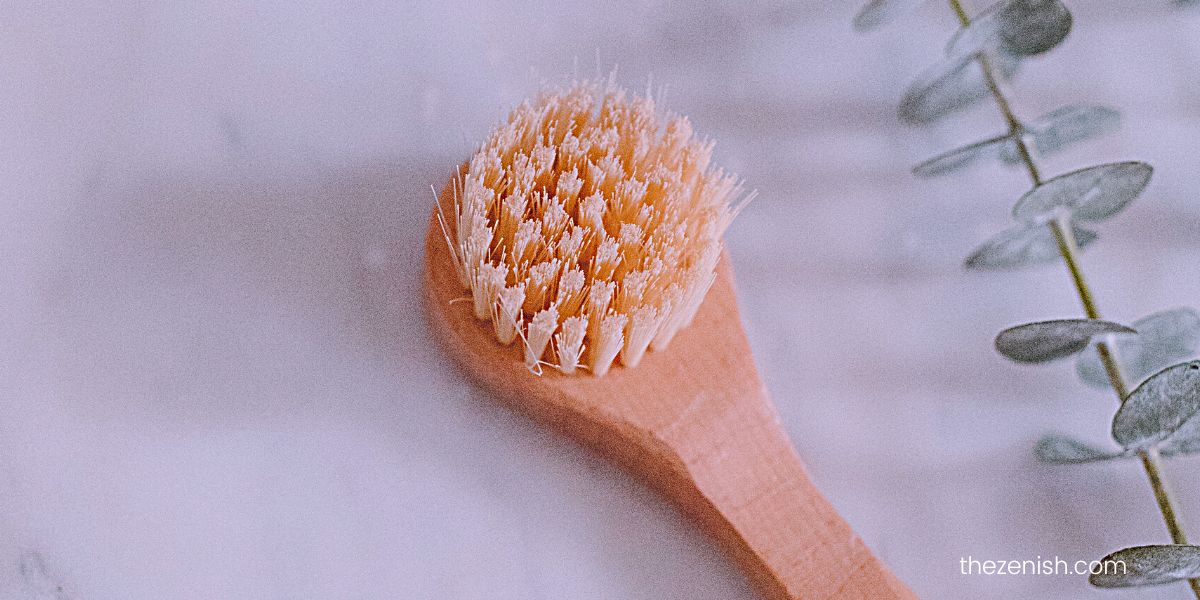
Alright, now that you’ve got the lowdown on exfoliation, let’s talk about some of my favorite exfoliants for tackling large pores and blackheads:
- The Ordinary AHA 30% + BHA 2% Peeling Solution: This chemical exfoliant is a powerhouse when it comes to unclogging pores and smoothing out skin texture. The combination of alpha-hydroxy acids (AHAs) and beta-hydroxy acids (BHAs) helps to dissolve dead skin cells and reduce the appearance of pores, leaving your skin looking brighter and clearer.
- Paula’s Choice Skin Perfecting 2% BHA Liquid Exfoliant: Another great chemical exfoliant, this liquid formula is perfect for those with oily or acne-prone skin. The 2% salicylic acid helps to unclog pores and prevent breakouts, while also reducing the appearance of fine lines and wrinkles.
No matter which exfoliant you choose, make sure to start slow and gradually build up to more frequent use.
And always follow up with a hydrating moisturizer to keep your skin feeling soft and supple!
Step #3: Treat
Alrighty, time for step three: treating!
This is where you get into some more targeted solutions for minimizing the appearance of large pores and reducing the occurrence of blackheads.
See also: 7 products to get rid of breast acne
While cleansing and exfoliating are great for keeping your skin clean and clear, sometimes your skin needs a little extra help in the form of targeted treatments.
So, what kind of treatments are we talking about?
Well, there are a few different options depending on your skin type and concerns.
Here are some of my favorites:
- Clay masks: Clay masks are great for drawing out impurities from deep within your pores. Look for masks with ingredients like kaolin or bentonite clay, which help to absorb excess oil and unclog pores.
- Retinoids: Retinoids are a type of vitamin A derivative that can help to reduce the appearance of fine lines, wrinkles, and large pores. They work by speeding up cell turnover and promoting collagen production, leaving your skin looking smoother and firmer.
- Benzoyl peroxide: If you’re dealing with stubborn blackheads or acne, benzoyl peroxide can be a game-changer. It works by killing the bacteria that cause breakouts and reducing inflammation, leading to clearer, healthier-looking skin.
Remember, when it comes to treating your skin, it’s important to choose products that work well for your skin type and concerns.
And don’t forget to patch-test new products before using them all over your face!
Treatment suggestions for large pores and blackheads
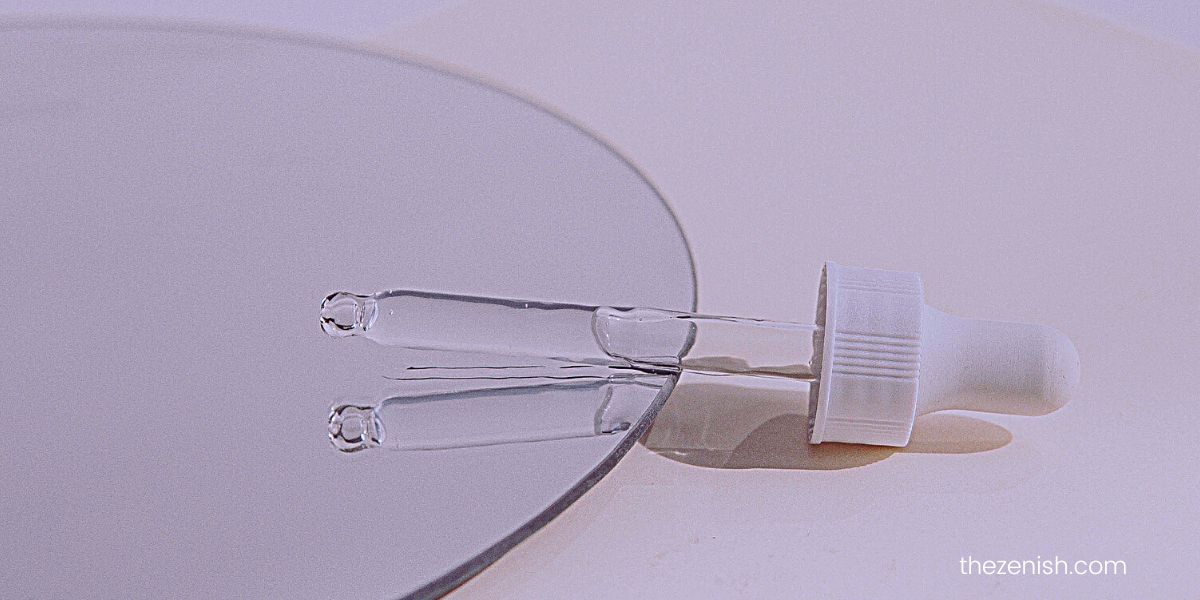
Alright, let’s dive into some specific product treatments for large pores and blackheads! Here are a few of my top picks:
- The Ordinary Granactive Retinoid 2% Emulsion: This lightweight serum contains a gentle yet effective form of retinoid that can help to improve the appearance of large pores and reduce the occurrence of blackheads. It’s also formulated with squalane to hydrate and soothe the skin.
- Paula’s Choice Skin Perfecting 2% BHA Liquid Exfoliant: I mentioned this one earlier as an exfoliant, but it’s worth highlighting again as a treatment option. The 2% salicylic acid in this liquid formula helps to unclog pores and reduce inflammation, making it a great choice for oily or acne-prone skin.
- The Inkey List Alpha Hydroxy Acid (AHA) Serum: AHAs are another type of chemical exfoliant that can be great for improving the appearance of large pores and reducing blackheads. This serum from The Inkey List contains a blend of AHAs, including glycolic and lactic acid, to exfoliate and brighten the skin gently.
Remember, when it comes to incorporating new treatments into your skincare routine, it’s important to start slow and patch test first.
And don’t forget to always wear sunscreen during the day, especially when using retinoids or AHAs!
4 Tips for using treatments effectively
Alright, we’ve covered the importance of cleansing, exfoliating, and treating when it comes to minimizing the appearance of large pores and reducing the occurrence of blackheads.
But how do you make sure you’re using these treatments effectively?
Here are 4 tips to keep in mind:
Tip #1 Start slow
When incorporating new treatments into your routine, it’s important to start slowly and give your skin time to adjust.
For example, if you’re trying a new retinoid or chemical exfoliant, start by using it just once or twice a week and gradually increase the frequency over time.
Tip #2 Be patient
It can take time to see results from targeted treatments, so don’t get discouraged if you don’t see immediate improvements.
Stick with your routine and give your skin time to adjust and respond.
Tip #3 Follow the instructions
Always read and follow the instructions on your skincare products carefully.
This will ensure that you’re using them correctly and getting the most benefit from them.
Tip #4 Use sunscreen
This one is important!
Many treatments, including retinoids and AHAs, can make your skin more sensitive to the sun.
Make sure to wear broad-spectrum sunscreen with at least SPF 30 during the day to protect your skin.
See also: Do I need sunscreen if my moisturizer has SPF?
By following these tips, you can make sure you’re using treatments effectively and getting the most out of your skincare routine.
Step #4: Moisturize
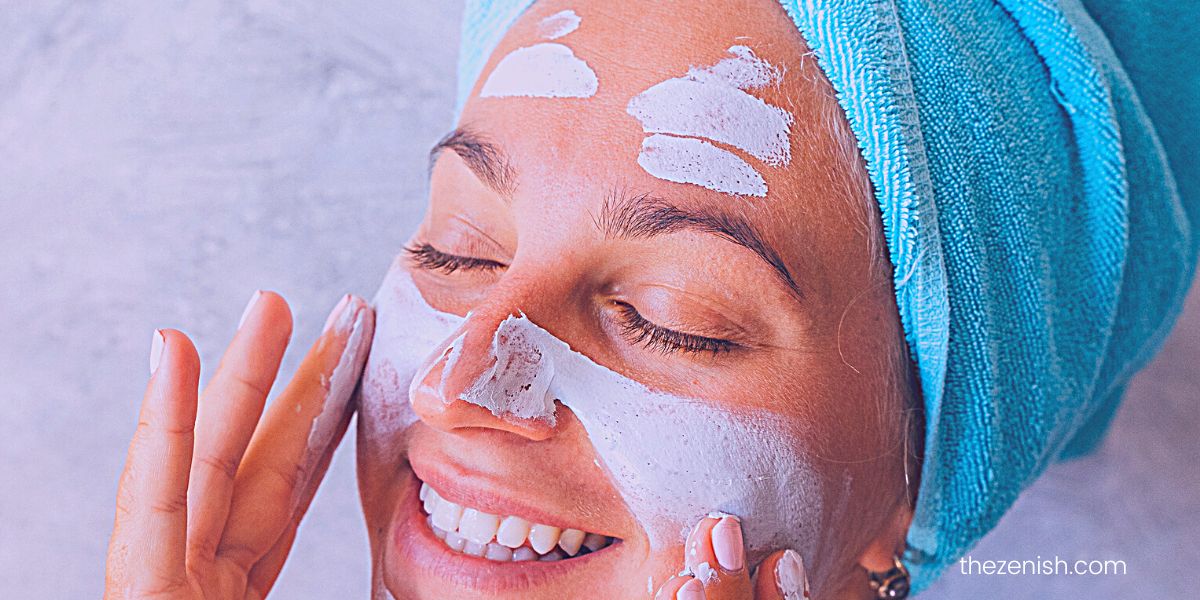
Moisturizing is arguably one of the most important steps in any skincare routine!
Even if you have oily skin, it’s crucial to keep your skin hydrated with a good moisturizer.
Here’s why:
- Hydration: Moisturizers help to hydrate and nourish your skin, which is important for maintaining a healthy skin barrier. This can help to prevent issues like dryness, flakiness, and irritation.
- Balance: If you’re using treatments like retinoids or BHAs, moisturizing can help to balance out any potential dryness or irritation caused by these products.
- Protection: A good moisturizer can also help to protect your skin from external stressors like pollution and environmental damage.
See also: Can you skip moisturizer and just use sunscreen?
When it comes to choosing a moisturizer for large pores and blackheads, look for lightweight, non-comedogenic formulas that won’t clog your pores.
Here are a few of my favorites:
- CeraVe PM Facial Moisturizing Lotion: This lightweight lotion contains ceramides and hyaluronic acid to hydrate and soothe the skin. It’s also oil-free and non-comedogenic, making it a great choice for oily or acne-prone skin. This is perfectly fine to use during the day or night. It says PM but that just means it doesn’t have SPF which is okay because it’s better to use actual sunscreen as sunscreen.
- Neutrogena Hydro Boost Water Gel: This gel formula contains hyaluronic acid to provide lightweight hydration without feeling heavy or greasy. It’s also non-comedogenic and oil-free.
- Drunk Elephant Protini Polypeptide Cream: This luxurious cream contains a blend of peptides and amino acids to hydrate and improve the appearance of fine lines and wrinkles. It’s also non-comedogenic and great for all skin types.
- La Roche-Posay Effaclar Mat Daily Moisturizer: This oil-free moisturizer is designed specifically for oily skin and helps to mattify and refine the look of pores. It contains sebulyse technology to help regulate oil production and keep shine under control.
- Origins GinZing Energy-Boosting Gel Moisturizer: This lightweight gel formula contains caffeine and ginseng to energize and refresh the skin. It also contains skin-smoothing beads that help to reduce the appearance of pores and even out skin texture.
- First Aid Beauty Ultra Repair Oil-Control Moisturizer: This non-comedogenic moisturizer is great for oily and acne-prone skin. It contains a blend of natural antioxidants and oil-absorbing ingredients like zinc oxide and kaolin clay to help control excess oil and minimize the appearance of your pores.
When choosing a moisturizer for large pores and blackheads, look for lightweight, oil-free formulas that won’t clog your pores.
It’s also a good idea to choose a moisturizer that contains ingredients like hyaluronic acid or ceramides to help hydrate and nourish your skin.
When using moisturizer, apply it after your other skincare products, like serums or treatments. Use a dime-sized amount and gently massage it into your skin using upward circular motions.
And remember – consistency is key! Moisturizing twice a day, every day helps you
Step #5: Sunscreen
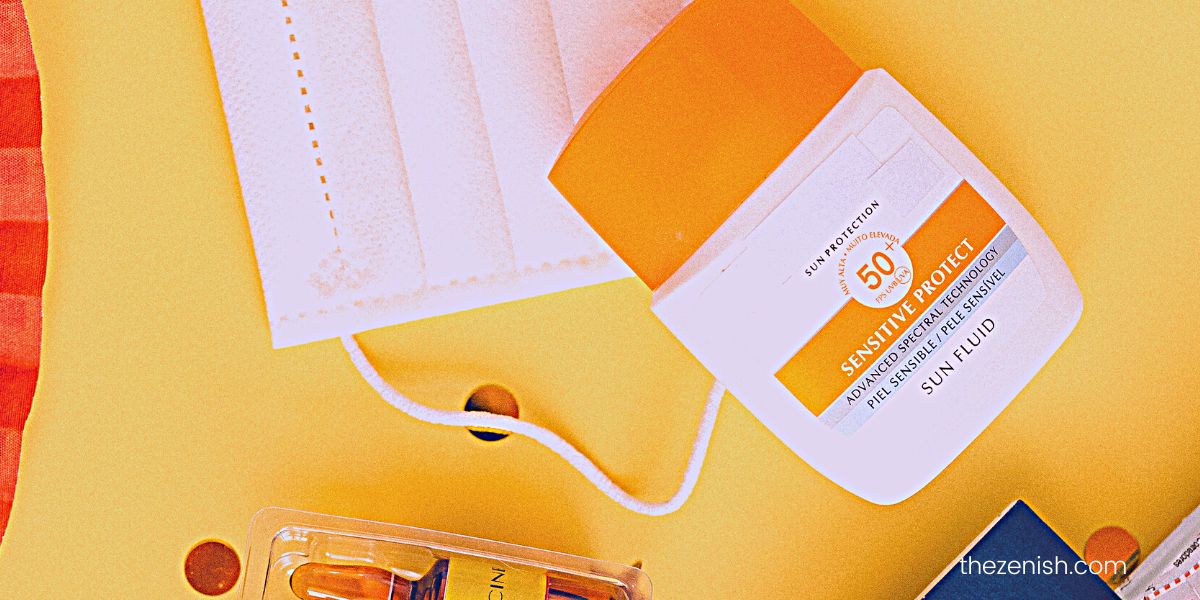
While we all love a good dose of Vitamin D, too much sun can make the appearance of large pores and blackheads worse. When your skin is exposed to the sun, it produces more oil, which can lead to clogged pores and breakouts.
Sun damage can also lead to premature aging, including fine lines, wrinkles, and dark spots – and who wants that? Sunscreen is an important step in your skincare routine, especially if you’re dealing with large pores and blackheads.
By wearing sunscreen every day, you can help prevent further damage and maintain healthy, youthful-looking skin. So, make sunscreen a non-negotiable part of your skincare routine.
Look for a broad-spectrum formula that protects against both UVA and UVB rays, with an SPF of at least 30.
See also: Do I need sunscreen if my moisturizer has SPF?
Apply it after moisturizing, and remember to reapply it every two hours if you’re spending time outdoors. Trust me, your skin will thank you!
See also: Does sunscreen only last two hours?
Sunscreen recommendations
Finding the right sunscreen for your skin can sometimes be challenging. You want something that won’t clog your pores or make your skin feel greasy.
Here are a few options to consider:
- Neutrogena Clear Face Liquid Lotion Sunscreen: This lightweight formula is oil-free and non-comedogenic, meaning it won’t clog your pores. It’s also water-resistant for up to 80 minutes, making it a great option for outdoor activities.
- La Roche-Posay Anthelios Clear Skin Oil Free Sunscreen SPF 60: This sunscreen is specifically designed for oily or acne-prone skin. It’s oil-free and non-comedogenic, and it contains a unique oil-absorbing complex to help control shine.
- EltaMD UV Clear Facial Sunscreen Broad-Spectrum SPF 46: This dermatologist-recommended sunscreen is oil-free and non-comedogenic, making it a great choice for oily or acne-prone skin. It also contains niacinamide, which can help improve the appearance of enlarged pores.
When it comes to choosing a sunscreen for large pores and blackheads, look for words like “oil-free,” “non-comedogenic,” and “water-resistant.” And don’t forget to reapply every two hours if you’re spending time outdoors!
Other lifestyle factors that can impact skin health
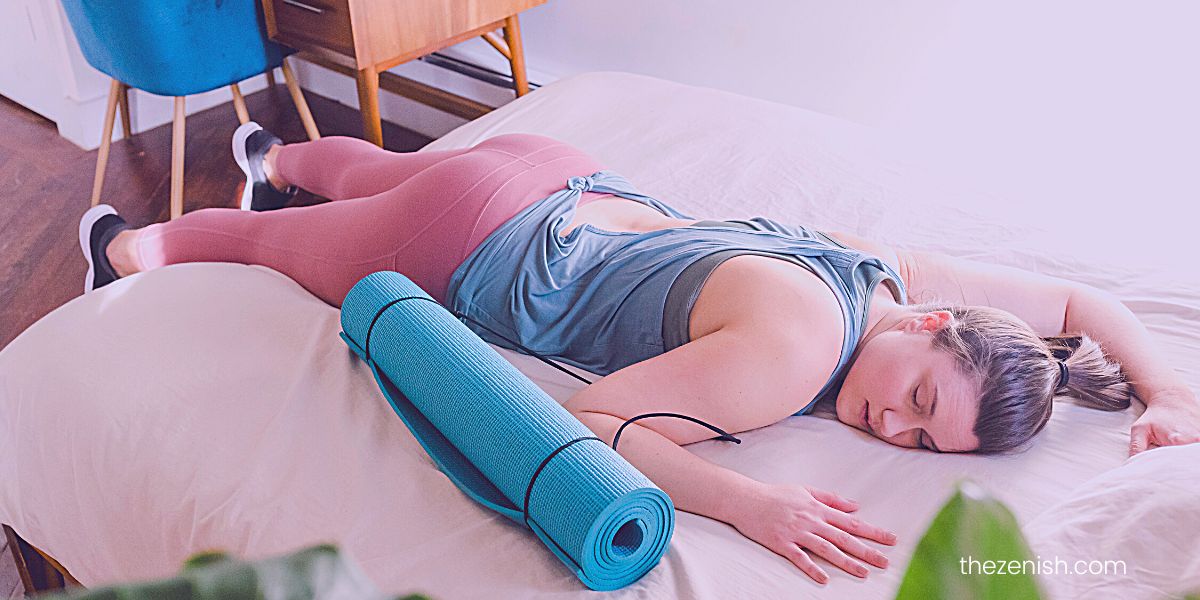
Taking care of your skin isn’t just about what you put on it – other lifestyle factors can impact the health and appearance of your skin. Keep these in mind:
Watch your diet
What you eat can have a big impact on your skin. A diet high in sugar and processed foods can lead to inflammation, which can worsen conditions like acne and rosacea.
On the other hand, eating a diet rich in fruits, vegetables, and healthy fats can help promote healthy skin.
See also: 5 Foods That Cause Acne And 6 That Help Clear Them
Manage stress
We all know that stress can wreak havoc on our mental health, but it can also impact our skin. Stress can trigger acne breakouts and make existing skin conditions worse.
Finding healthy ways to manage stress, like exercise, meditation, or spending time with loved ones, can help keep your skin looking its best.
Don’t forget about sleep
Getting enough sleep is better for your overall health, but it’s also important for skin health. Lack of sleep can lead to dull, tired-looking skin and contribute to the development of fine lines and wrinkles. Get at least 7-9 hours of sleep each night to ensure your skin looks amazing.
Remember, taking care of your skin is a holistic process. Paying attention to what you put in your body and how you manage stress can have just as big of an impact on your skin as the products you use.
So, take care of your skin from the inside out!
FAQs
Why do I have so many blackheads and clogged pores?
The truth is, that several factors can contribute to blackheads and clogged pores. Some people are just more prone to them due to genetics or hormonal fluctuations, while others may be exacerbating the problem by using the wrong skincare products or not properly cleansing their skin.
Another common culprit is excess oil production, which can mix with dead skin cells and other debris to form a plug in the pore.
And let’s not forget about environmental factors like pollution and humidity, which can also contribute to the development of blackheads and clogged pores. So if you’re dealing with this, know that you’re not alone.
By taking the time to understand what’s causing your blackheads and clogged pores, you can develop a targeted skincare routine that can help minimize their appearance and keep your skin looking its best.
Is it OK to squeeze nose pores?
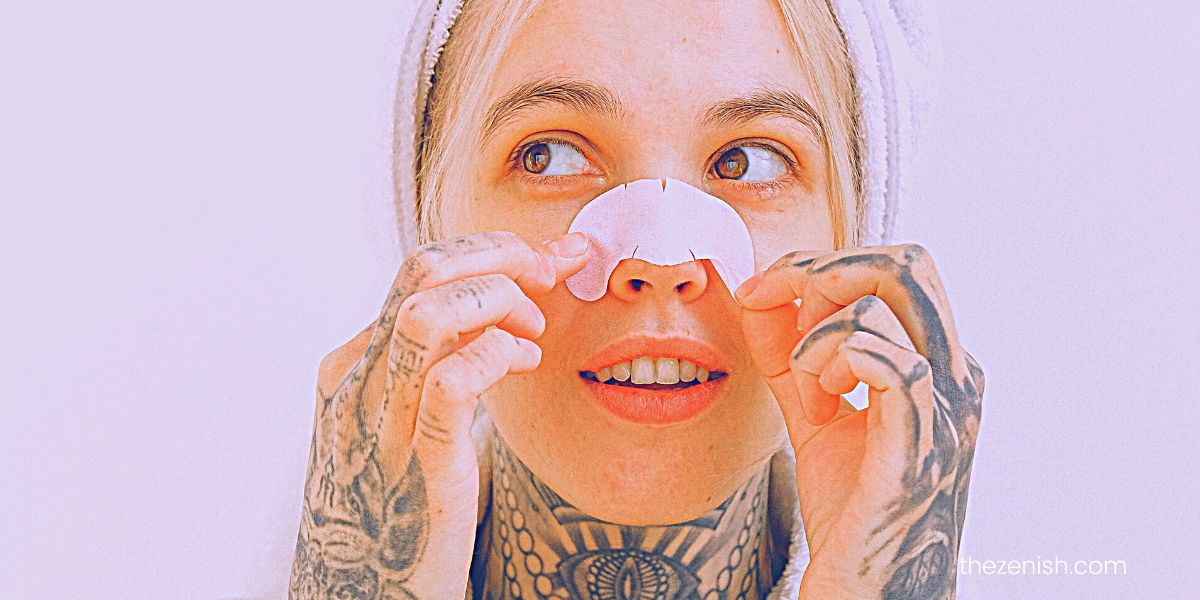
The short answer is no; it is not okay to squeeze your nose pores. While it might feel satisfying at the moment, squeezing can cause the pores to become irritated and inflamed, making the problem worse instead of better.
And if you’re not careful, you could even end up causing scarring or permanent damage to your skin.
So what can you do instead?
Well, the best approach is to use gentle and effective skincare products that are designed to help minimize the appearance of blackheads and clogged pores.
Cleansing, exfoliating, and using targeted treatments can all be effective ways to help keep your nose (and the rest of your face) looking its best.
And if you’re struggling with blackheads and clogged pores, it’s always a good idea to consult with a dermatologist.
They can help you develop a personalized skincare routine that addresses your specific concerns and helps you achieve the best possible skin.
Will pores shrink after removing blackheads?
Unfortunately, no – removing blackheads doesn’t change the size of your pores. Pore size is largely determined by genetics, so if you have naturally larger pores, there’s not a whole lot you can do to make them smaller.
However, you can minimize their appearance and prevent blackheads from forming.
One of the best things you can do is to follow a consistent skincare routine that includes cleansing, exfoliating, and using targeted treatments to keep your pores clear and unclogged.
This can help make your pores look less noticeable and prevent blackheads from forming in the first place.
Another thing to keep in mind is that the appearance of your pores can be affected by things like oil production, hydration levels, and sun exposure.
So maintaining a healthy lifestyle that includes eating well, staying hydrated, and protecting your skin from the sun can all help keep your pores looking their best.
Ultimately, while removing blackheads won’t shrink your pores, taking good care of your skin can go a long way in keeping them healthy and happy.
How can I tighten my pores?
It’s not possible to change the size of your pores. But there are some things you can do to help make them look smaller and tighter.
- First of all, keeping your skin clean and clear is key. This means following a consistent skincare routine that includes cleansing, exfoliating, and using targeted treatments to keep your pores unclogged. When your pores are clear and free of debris, they’re less likely to stretch out and appear larger.
- Another tip is to use products that contain ingredients like salicylic acid or retinoids, which can help exfoliate and renew the skin, making your pores look tighter and more refined.
- Finally, protecting your skin from the sun is super important. UV damage can lead to collagen breakdown, which can in turn make your pores look larger. So make sure you’re using a daily sunscreen to keep your skin protected and healthy.
While you can’t change the size of your pores, these tips can help to make them look smaller and tighter – so you can rock that smooth, flawless complexion you’ve always wanted!
Why are my nose pores always full?
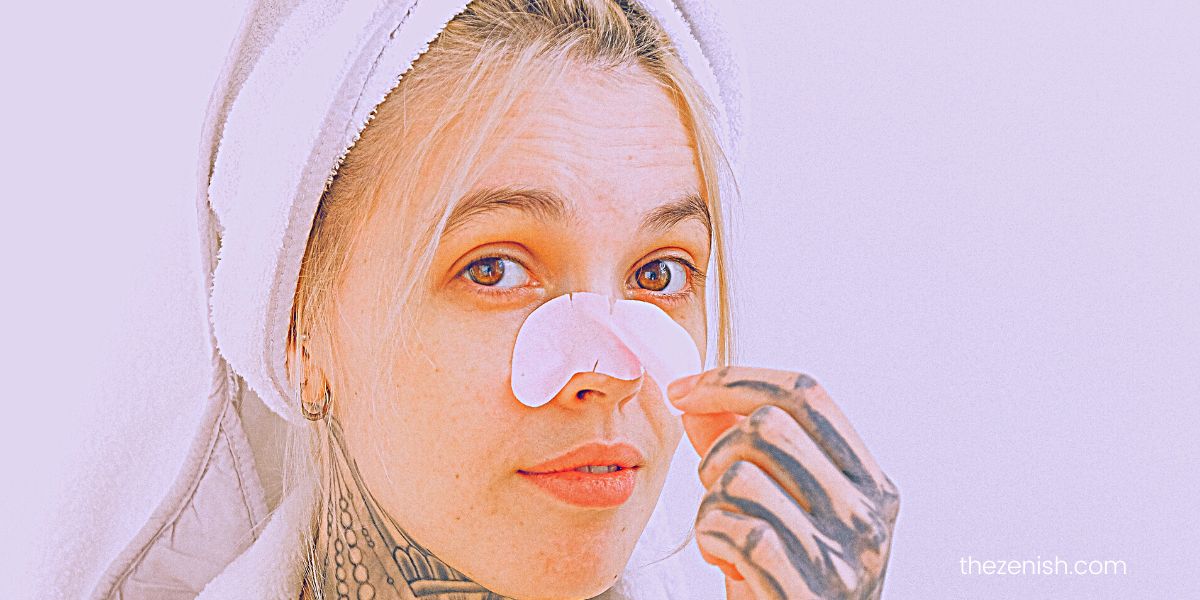
There are a few reasons why this might be happening. One of the main culprits is excess oil production.
When your skin produces too much oil, it can mix with dead skin cells and other debris to clog up your pores, leaving you with those pesky blackheads and whiteheads.
Another possible cause is not washing your skin properly.
If you’re not washing your face thoroughly enough, or if you’re using the wrong kind of cleanser, you might not be getting all the gunk out of your pores.
Environmental factors can also play a role.
Pollution and dirt in the air can settle on your skin and contribute to clogged pores, especially on your nose where oil production tends to be higher.
So what can you do to keep your nose pores clear?
First, cleanse your skin properly – use a gentle, non-comedogenic cleanser, and make sure you’re washing your face thoroughly daily.
You can also try using products with ingredients like salicylic acid or glycolic acid, which can help to exfoliate and keep your pores clear.
And don’t forget to be patient – it can take time to see results, but with a little persistence, you can say goodbye to those stubborn nose pores!
Does retinol clear blackheads?
Retinol is a pretty magical skincare ingredient – it can help with everything from fine lines and wrinkles to acne and hyperpigmentation. But when it comes to blackheads specifically, can it make a difference?
Yes, it does!
Retinol works by increasing cell turnover, which can help to unclog your pores and prevent new blackheads from forming.
It can also help to reduce inflammation and redness, which is especially helpful if you’re dealing with stubborn blackheads that just won’t budge.
However, it’s important to note that retinol isn’t a quick fix – it can take several weeks or even months to see results, and it’s not a substitute for a good skincare routine that includes regular cleansing and exfoliating.
If you’re interested in incorporating retinol into your routine to help with blackheads, it’s a good idea to start with a low concentration and work your way up slowly to avoid any irritation or dryness.
As always, be sure to wear sunscreen during the day to protect your skin and avoid any potential sun damage.
What next?
At this point, you probably understand how to create a personalized skincare routine to address large pores and blackheads.
Remember, the key steps are cleansing, exfoliating, treating, moisturizing, and protecting your skin from the sun.
There are a variety of products available that can help you achieve your skincare goals, but it’s important to use them consistently to see results.
Finally, don’t forget that lifestyle factors like diet and stress can also impact your skin’s health.
By taking care of your body from the inside out, you’ll be giving your skin the best possible chance to look and feel its best.
With a little time and effort, you’ll be well on your way to achieving smoother, clearer, and healthier-looking skin.

